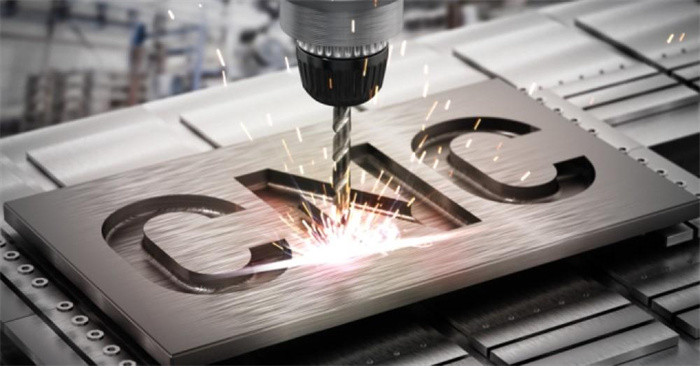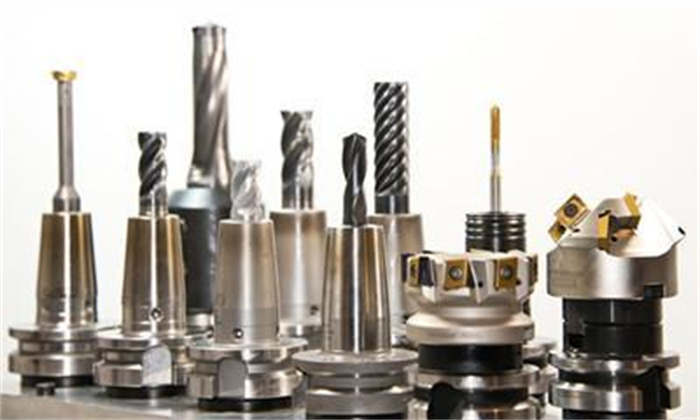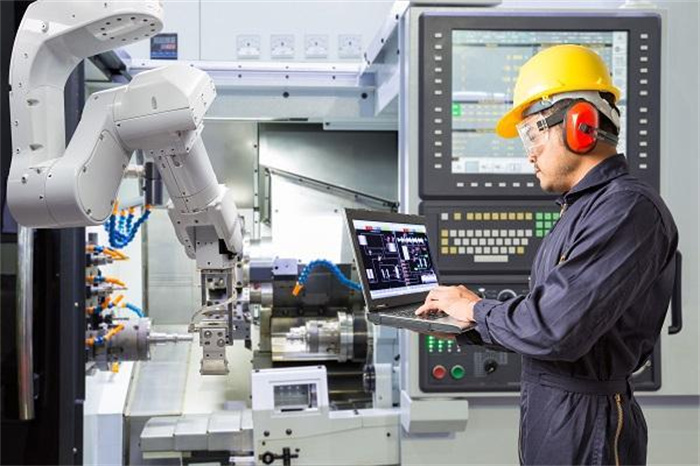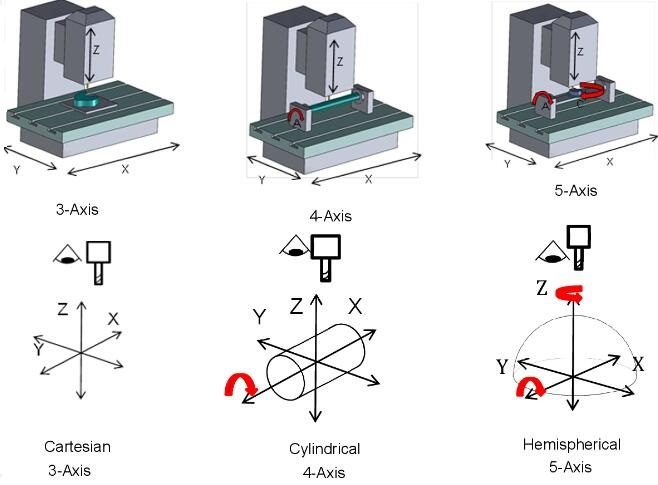CNC has shifted the manufacturing sector by optimizing the entire production process while enabling the effective execution of complex tasks. CNC, or Computer Numerical Control, is the automated control of production-use machining tools. However, CNC machine basic knowledge relies heavily on pre-configured software and codes. These programs instruct each machine on precise movements and functions.
In addition, a CNC machine is a kind of hardware to handle various products and parts. It amplifies output efficiency by eliminating the need for a human operator. Thus, although some manual labor remains crucial, high-tech firms now rely on advanced CNC machine tools to make the workflow sustainable. In this article, you will review CNC machine basic knowledge and its elements.

CNC machines are digitally operated hardware sets that make specific parts and bits. Such machinery can perform diverse operations on assorted items, including milling, turning, drilling, cutting, and routing. These engines can do machining on three- or six-axis setups. It is due to its pre-written codes for PCs.
Further, CNC tech is widely used to produce many diverse products. It includes aerospace parts, medical supplies, car parts, and more. These machines can deliver accurate, exact, and efficient finished goods. CNC devices have mostly replaced labor-operated modes in today's industrial sector.
In addition, CNC machines come in different shapes and dimensions based on the demands of the job at hand. They can be suited to a wide degree of tools. Typical features include feed rates, multiple axes of motion, motorized tool shifts, and flexible speeds. Because of their precision, these devices can make goods with specific limits. Hence, having basic knowledge of a CNC machine is critical to operating modern engines.
You can use CNC machines for precise and effective manufacturing by following these steps.
Step 1. Select CAD/CAM Software. For CAD Model Formation, make a 3D model of your part using CAD software. It's similar to digitally molding objects.
Step 2. To convert CAM software, proceed to this software once your model is ready. This program converts your 3D model to G-code, which CNC machines use.
Step 3. Create the path your CNC machine will follow in the CAM software. Indicate the speed at which it travels, cuts, and switches tools. Toolpaths are similar to CNC machining's choreography.
Step 4. Use the CAM program to check and modify the G-code. Then, watch the machine work as a result of the G-code commands.
Step 5. Select the correct cutting instrument, considering factors like tool life, cutting speed, and kind of material. Using the right equipment enhances the efficacy and level of the machining process.
Step 6. Before using the CNC machine in real life, test the program using the CAM software's simulation feature to identify any possible issues.
Step 7. Try the program in the CAM software's simulation before using the CNC machine in reality. This aids in finding and resolving issues.
Step 8. After completing the program, utilize the CAM software to create the final G-code. The G-code contains the instructions for the CNC machine to generate the required item.
Step 9. Provide the CNC machine with the G-code program. Based on your tool and setup, you may manage this utilizing a USB, network connection, or other techniques.
Step 10. Try the software on scrap material before you start producing large quantities. This ensures proper operation and accurate part assembly.
The CNC Machining components are classified under CNC tools, Design for Machinability (DfM) rules, and material selection.

CNC turning tools work with a lathe rotating the workpiece at high revolutions per minute while the turning tool shapes the workpiece into the programmed shape. It includes Boring, Chamfering, Knurling & Parting Tools. The CNC milling machine uses CNC cutting tools to remove material from various spots on a fixed workpiece in a circular motion. It includes End, Slab, Face, & Hollow Mills. Drill bills work with twist drills or CNC mills; these holes are made using flutes and tapered cutting points. It includes Center, Ejector, & Twist Drills.
The constraints on design in CNC machining are inherent to the cutting process mechanics. Most CNC cutting tools have a cylindrical shape with a flat end, limiting the geometries. Surfaces that can't be reached by the cutting tool can't be CNC machined. Likewise, manual repositioning results in a small but significant positional error. This is a crucial benefit of 5-axis versus 3-axis CNC machining. Due to the cutting forces and the temperatures created during machining, the workpiece can deform or vibrate. Thus, the internal vertical corners of a CNC part will have a radius, no matter how small a cutting tool is used.
● Tall Features: max. ratio: height/width < 4
● Cavities & Pockets: depth: 4 x cavity width, depth: 25 cm (10’’)
● Internal Edges: larger than 1/3 x cavity depth
● Minimum wall thickness: 0.8 mm (for metals), & 1.5 mm (for plastics)
● Holes: diameter: standard drill bit sizes, depth: 4 x nominal diameter
● Threads: length: 3 x nominal diameter, size: M6 or larger, size: M2
● Tolerances: standard: ± 0.125 mm, feasible: ± 0.025 mm
The optimal material option depends on your specific use. CNC machining is mainly used with metal alloys, which include Aluminum 6061, Stainless steel, Alloy, Mild steel, Tool Steel, and Brass. Plastic CNC machines are for prototyping before molding. They include ABS, PC, Nylon, POM, and PEEK.
● Tensile strength: PEEK, Nylon, PC (Low < 100 MP a), Aluminium (Medium < 500 MP a), Stainless Steel, Tool Steel, Alloy Steel (High > 500 MP a)
● Hardness: Stainless Steel, Alloy Steel (90 HRB), Tool Steel (> 50 R C)
● High Volume & Easy to machine: Aluminium, Brass, POM
● Chemical resistance: Stainless Steel, PEEK, Teflon
● Temperature resistance: Brass, PEEK, Teflon (Low < 250º C), Aluminium (Medium < 400º C), Stainless Steel, Tool Steel, Alloy Steel (High > 500º C)
CNC machine programming refers to writing code or a set of commands that a computer may utilize to operate CNC tools and machines to create a product. A CNC programmer looks over a CNC model of a part digitally before entering a set of instructions into a computer.

Simple part machining is a perfect application for manual programming. This programming method is unsuited for cutting complex pieces due to its high mistake rate. The conversational programming interface allows users to enter commands instead of G-code. CAM software is The most popular type of CNC programming, particularly for CNC prototyping machining. There are more significant CNC programming language codes besides G-code and M-code.
The T code specifies tool identification. The intended tool spindle speeds for the machining operation with S-codes. Machine code that has an N-coded line or block can be identified. The CNC machine's non-geometric operations are managed using M-codes. M-codes manage the coolant and spindle. The different cutting rates the tool has to move at are coded by F-codes & G-codes. D-codes provide data on a CNC machine's tool offset, measuring a tool's protrusion from the tool holder or separating the tool's cutting edge and center line.
Generate and export a 3D Model, make and confirm tool paths, and download the code to a CNC Machine. Solidworks, Meshcam, Fusion 360, Vectric, and Mastercam are some of the best CNC programming software currently available. Therefore, before writing CNC code, you must be familiar with the principles of CNC machining, CAD/CAM software, and the G-code machine command language.
In CNC machining, a product section is removed using various methods to create the desired output. The technique used defines the removal style. Some typical CNC machining operations used in part process includes CNC drilling, milling, and turning.
● CNC Milling: In CNC machining, milling removes a portion of a workpiece using rotating cutting tools. With CNC milling, you can execute two primary operations.
● Face Milling is used to cut flat surfaces, shallow surfaces, and cavities with a flat bottom.
● Peripheral CNC Milling is used to create deep cavities in the workpiece.
● CNC Turning: CNC turning uses CNC machining to create the spiral interior and external sections of these two components. The following tasks are possible with CNC turning: Boring, Facing, Grooving, and Thread cutting.
Depending on your CAD file, there are additional potential CNC machining procedures. They include Drilling, Broaching, Sawing, Grinding, Honing, and Lapping.
Here are the machine's type and their configuration:
● CNC Milling Machines are ideal for creating complex 3D prototypes.
● CNC Turning Machines can be used for cylindrical components.
● CNC Laser Cutting Machines are perfect for precision cutting.
● CNC Plasma Cutting Machines are suited for cutting metal and conductive materials.
● CNC Router Machines are great for woodworking on softer materials.
Advanced CNC machines, where different spindles are selectable and capable of moving, cutting, drilling, and shaping parts controlled through several axes, may be required for parts for the automotive, defense, aerospace, or medical industries. 2 to 8-axis turning centers and 3 to 5-axis machining centers are two examples of these devices.
One, two, or even multi-spindle designs are permitted. Consider horizontal or vertical CNC lathes with 2 to 5 axes or milling machines with 3 to 5 axes for work ranging from simple to highly complicated or for batch manufacturing.
● 3-axis machines are suitable for simple parts like prisms, pockets, and flat surfaces.
● 4-axis machines are efficient for parts with cylindrical or angled features.
● 5-axis machines provide the most flexibility for complex parts with intricate geometries and non-perpendicular surfaces.
Production Time and Cost: 3-axis machines are often faster and cheaper for simpler parts. However, for complex parts, four or 5-axis machining can be faster overall by eliminating the need for multiple setups.

CNC machining is widely used to fabricate industrial parts due to various benefits. Below are a few advantages of the system over other compelling methods.
For several reasons, experts must master how CNC machines operate. You may shorten lead times, improve output, and simplify the methods by gaining insights. Project control can result in cost savings through better use of resources and machine usage. Expertise in CNC activities can give you an edge in the market by meeting client demands.
Further, experts can improve output and corporate growth by making sound choices. It includes staff training, process yield, and capital ventures. Thus, these workers can stay ahead of the curve by following CNC advances and using new features to spur creativity.
CNC machining offers a few features for intense precision. After the machine starts and the software launches, it runs freely without human help, lowering the error rate. Multiple activities can be achieved, speeding up the process and making it easier to fulfill significant volume demand. Accuracy is not impaired in any way during this process.
Moreover, CNC machining has made 3D modeling of parts for later use possible. Despite the volume, the required precision is achieved. Within the allotted time, all the pieces in a batch are made with the same quality. Hence, there is little material waste, lowering the product's costs.
Because CNC milling machines rely on codes to simulate parts, human error is removed. However, the operator of a CNC machine still has some control over the production process. The operator critically affects the accuracy of a CNC milling project. He is in charge of the cutting tool calibration and the work setting.
Still, they must also be able to spot when their tools cannot produce the best outcome. Overall, there is a much lower chance of human error. Producing tricky parts with tolerances as tiny as 0.004 mm is simple. It's vital to remember that not every CNC machine is made equal and produces parts with a high degree of accuracy.
Production can begin once the worker has set up the machine with the required design criteria. Part creation is relatively quick once the CNC machine is in a production run. Modern CNC machines are very scalable and can produce vast parts.
Their ability to create vast amounts of a single item or huge batches sets them apart from manual processes and customary tools. The quantity of parts CNC machines can produce is unlimited. Hence, it enables firms to use their assets and financial aids better.
A CNC machine may have a high initial cost but reduced ongoing expenses. CNC machining is cost-effective due to its high output rate and low production price. Another way to save costs is to demand less training. Plus, operators can virtually learn how to operate CNC machines, enhancing the appeal of CNC machining.
Similarly, CNC machining reduces the number of workers needed to complete operations. A single, competent operator can operate many CNC machines and load them with the required designs. Thus, you can get an edge by passing on the labor cost savings to your clients.
A CNC machine requires an operator to input code and perform machine maintenance. Everything else is automated. Workers not needing to be close to the cutting tools can increase workplace safety.
Since the advent of CNC tools, processing has seen a decrease in incidents involving workplace health and safety. A CNC machine can be easy for a user with training and experience. It might be more challenging than a cordless drill, but a fresh worker can still handle a complex CNC machine.
Industries depend heavily on CNC machines. Maintaining them is essential to ensuring productive output and reducing downtime. Machine longevity can be easily extended by routinely cleaning and oiling them. Debris and poor lubrication can lead to tool wear and degrade the quality of the parts.
So, creating a regular supervision plan that includes alignment checks and repairing worn parts leads to longevity. Accurate data system upkeep with efficient planning and resource allocation is also critical. Well-defined systems and simple problem-reporting ways enable prompt problem reactions.
In addition, keeping an inventory of spare parts reduces downtime. It offers quick access to required and difficult-to-find items. These actions work together to maintain CNC machines in top operations, enabling productive and ongoing processes.